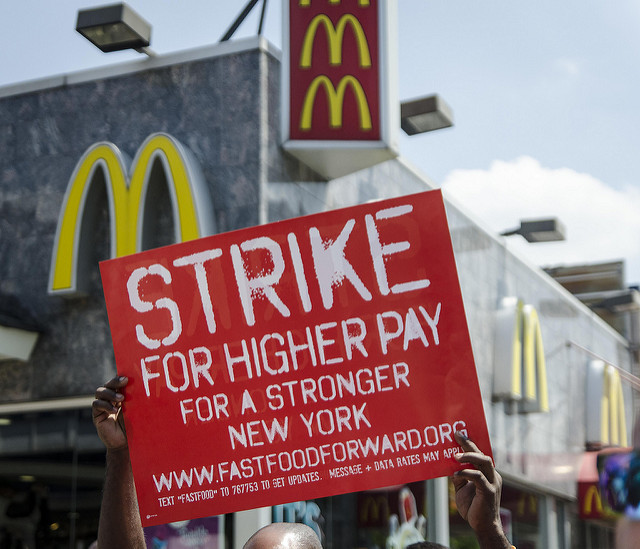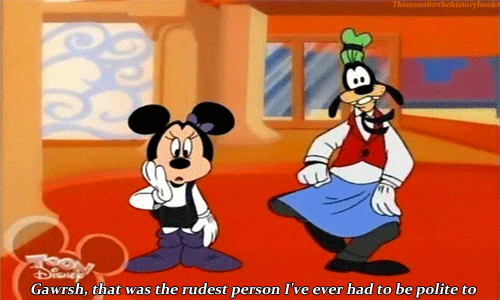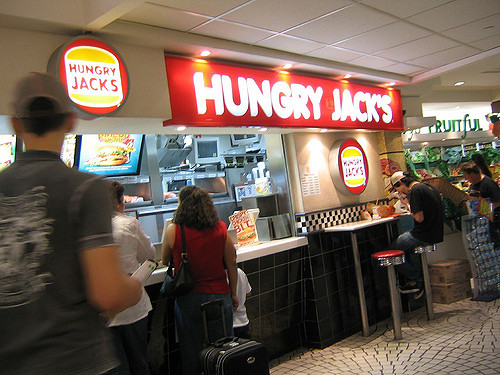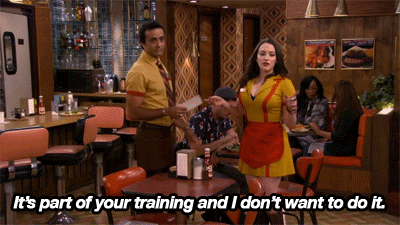Over the past few years, we’ve seen protests for a raise in minimum wage all throughout the country. Fight for $15 was started by fast food workers, who recognized that their grievances were a national issue. After working 10 years on the job, they were covered in burn marks and scars from grease and grills. And all they had to show for their work was $7.25 an hour.

Photo courtesy of Annette Bernhardt on Flickr.com
Today, there are 14 cities and states who have or are working to adopt a $15 minimum wage. Although that’s a step in the right direction, there are also currently, 21 states that adhere to the federal minimum wage laws. Although a bill was introduced in April 2014 to raise the minimum wage to $10.10, it remains $7.25 today.
Now let’s consider that $7.25 in terms of fast food workers. The minimum wage has certain clauses that prevent some fast food workers from even reaching that. For instance, if the workers receive tips, they can be paid as low as $2.13 an hour, as long as the amount they make in tips allows them to reach the federal minimum wage. This clause allows Buffalo Wild Wings servers to make an average of $4.95 an hour.

Gif courtesy of giphy.com
The plight of fast food workers goes beyond American borders. For instance, Australia has been applauded for their minimum wage, which is currently $17.29 in Australian Dollars (AUD), or $12.61 in US Dollars (USD). Therefore the workers of one of Australia’s top fast food chains, Hungry Jack’s, should all be receiving $17.29 AUD an hour.
And yet the average salary for a worker, according to glassdoor.com, was just $13.30 AUD. The highest wage a crew member reported was $18.00 AUD while the lowest was just $10.00 AUD. Compare Hungry Jack’s average salary, in USD, to all American fast food chains. You’ll find that those workers make $0.36 more per hour than the highest paying fast food chain in America, Starbucks. Starbucks is the only fast food chain in America with an average salary of over $9.00 an hour.
Sounds like a great deal for Hungry Jack’s workers, until they take a look at how much they are actually supposed to be making.

Photo courtesy of savv at Flickr.com
So how does a top fast food chain get away with paying less than the minimum wage? Like America’s federal minimum wage laws, Australia has a few extra clauses that give their companies more leeway. For instance, trainees or apprentices, anyone under 21, or people with disabilities are not entitled to the same minimum wage. Their minimum wage is set by a different calculation that takes into account the cost of their training.
If you take a look at some of Hungry Jack’s reviews from former employees, you might start to see a trend. Many of these employees claim it was a good place for a first job. This should come as no surprise because the company specifically targets younger workers.
It has developed a “traineeship” to train their workers in hospitality, retail services, or retail operations. That might sound like a great deal, if the worker doesn’t know that the Australian minimum laws specifically state that a trainee has a “special” minimum wage.

Gif courtesy of giphy.com
Australia is not the only country benefiting from this system. According to the American minimum wage laws, anyone under the age of 20 can be paid only $4.25 an hour for the first 90 days of their employment. This is known as training wage and is meant to offset the cost of training. So, for the 30 percent of fast food workers in America who are only teenagers, they are entitled to an even lower salary then their coworkers.

Gif courtesy of giphy.com
While the fight for fair minimum wage may have been started by fast food workers, it seems that they’ve been left behind. Their companies have found loopholes to prevent them from getting what they deserve. For some fast food workers, even just getting minimum wage is a far-off goal.


